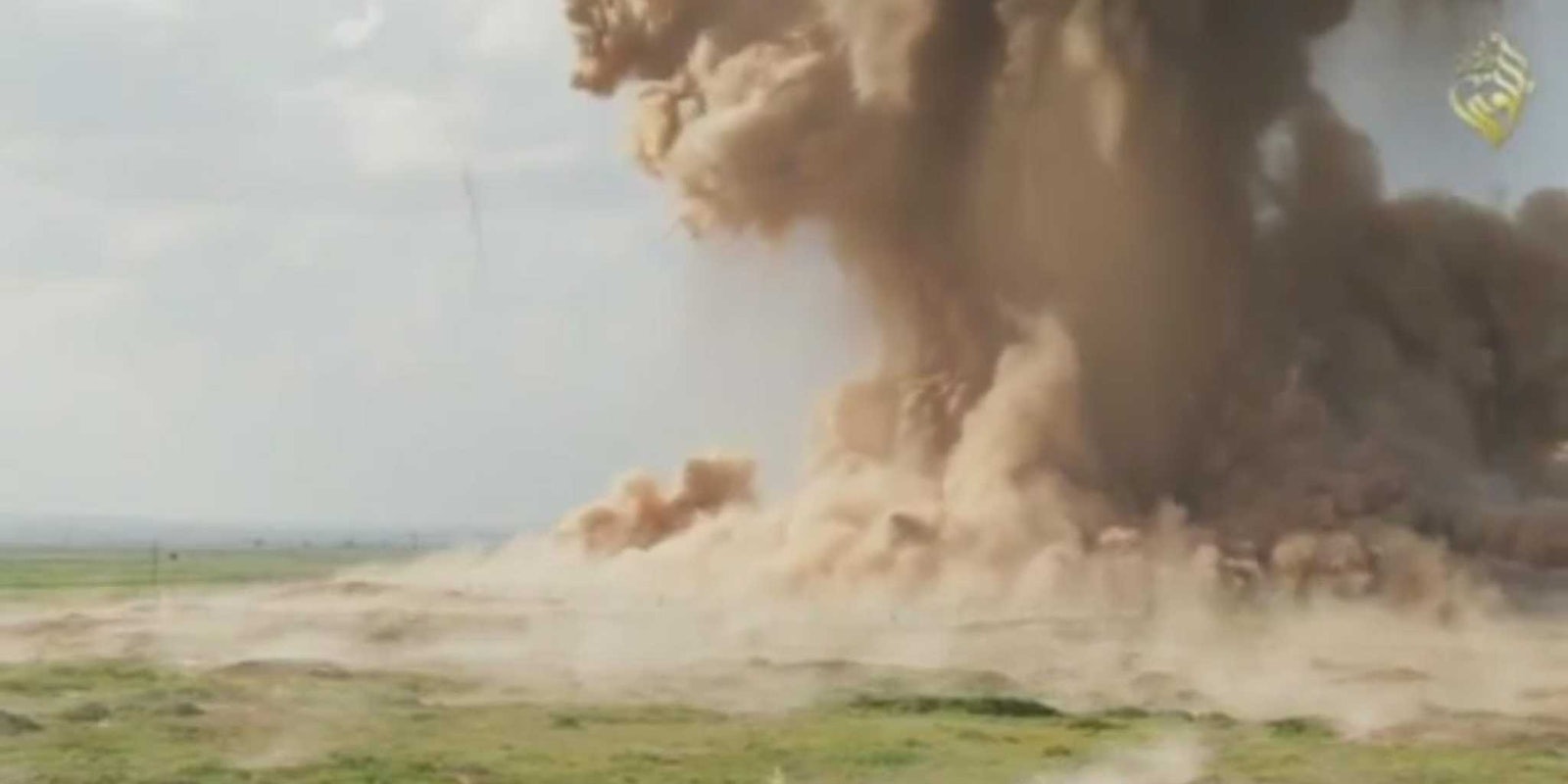One of the Islamic State’s most harrowing acts have involved no loss of life whatsoever. Instead, it’s a loss of history.
In a new propaganda video, Islamic State (ISIS) militants, clad in black and boasting power tools, appear to destroy ancient Assyrian artifacts in Northern Iraq, a region that remains under ISIS control.
Nimrud is a 3,000 year old city destroyed because of its “un-Islamic” characteristics. Bulldozers and large scale explosives were apparently used to leave craters where invaluable historical materials once stood, even as ISIS loses territory to the south.
“ISIS continues to defy the will of the world and the feelings of humanity,” the Iraqi Ministry of Tourism and Antiquities announced in a March statement when news of the destruction first spread. “They violated the ancient city of Nimrud and bulldozed its ancient ruins.”
Over the last several months, ISIS has destroyed antiquities throughout Northern Iraq and Syria, including in Mosul, Khorsabad, Matra, and Bosra. Claiming justification under the rules of Islam, ISIS militants have also looted museums, which leads to the illegal sale of artifacts on the world’s black market, a key source of revenue for the militants.
“There seems to be some patterns to the sorts of things that Islamic State and other extremist organizations are looting,” Michael Danti, a Boston College archaeologist, told NPR. “They seem to be targeting sites that date to the Classical era, the times when the Greeks and Romans ruled Syria and also the Byzantine period, the period when Syria was essentially the center of Christianity. What we think Islamic State is doing is looting sites for antiquities that they can easily market to middlemen because those antiquities will be hard to trace back to Syria.”
The United Nations called the destruction at Nimrud a “war crime.”


